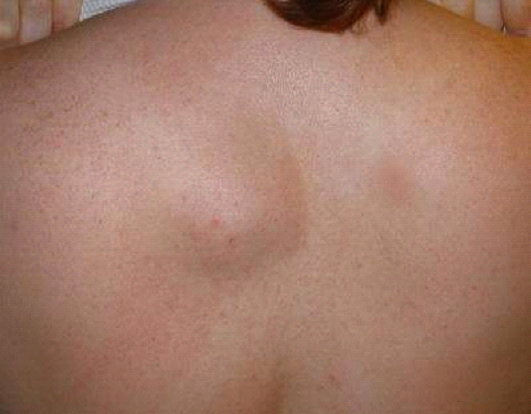Lipoma Symptoms, Causes, Diagnosis and Treatment

What Is A Lipoma?
When a knot of fat cells is created beneath the skin, a rubbery lump evolves which moves easily on a light finger pressure. The lump is usually hard and rough and is known as a lipoma. Lipoma is, in most cases, benign i.e. it does not lead to cancer. However, liposarcoma looks very similar to lipoma and is cancerous. Very often, a lipoma might be annoying and painful so a treatment is necessary for relief. Lipomas usually evolve on the neck, armpits, torso, upper arms and upper thighs but they can evolve almost anywhere on the body. The lump grows gradually and may take months or even years to grow to a proper size.
What Are The Symptoms Of Lipoma?
The lump or lumps that may evolve are:
- Usually small i.e. upto 2 inches in diameter. However, they might grow as large as 6 to 8 centimeters.
- Painful if they grow on a nerve.
- Located just under the skin.
- Soft and rubbery so they move easily.
Since lipoma is not a very dangerous disease, it is not necessary to run to a doctor immediately after the symptoms evolve. However, if the lump grows too large or painful, medical treatment is necessary.
What Causes Lipoma?
Despite several researches and studies, the actual reason of lipoma is yet unknown. However, most cases are reported as genital i.e. lipoma is usually inherited. A controversial argument stated that being overweight may cause lipoma too but this theory was proven as incorrect some time ago. Some medical experts still believe that a minor injury may activate the growth of lipoma.
What Are The Risk Factors Of Lipoma?
The following factors may increase the risk of having lipoma:
- Having underlying disorders including Cowden syndrome, medalung disease and adiposis dolorosa.
- Rare in children but common in people with ages between 40 and 60 years.
How Is Lipoma Diagnosed?
Since lipoma is not very difficult to diagnose, doctors may use the following methods to remove any doubts regarding liposarcoma, a similar-looking lump which is cancerous:
- Tissue biopsy for lab observation.
- Ultrasound.
- Magnetic resonance imaging or MRI.
- Computerized tomography or CT scan.
- Physical examination.
One or a combination of these tests help doctors evaluate whether the lump is due to lipoma or liposarcoma.
How Is Lipoma Treated?
Treatment is not usually required unless lipoma turns out to be painful and annoying. If the lump increases in size too much, create trouble in movement and releases fluid that smells unpleasant, the following methods are generally used:
- Liposuction involves a needle and syringe to eliminate the lump.
- Surgical removal.
- Steroid injections could help suppress the lump but the lipoma is not completely removed from the area.
There is no way to prevent lipoma from occurring. This is because the root cause of lipoma is yet unknown. However, lipoma rarely turns out to be dangerous and therefore several doctors use a wait-to-see strategy to observe if the lump is growing too fast.
By : Natural Health News




